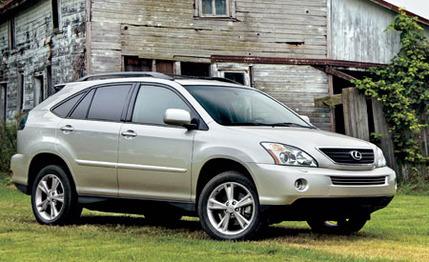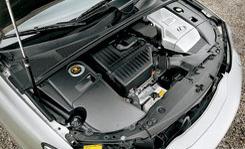 Long-Term Road Test
Long-Term Road Test
The RX has always been a stylish, luxuriously appointed, and smooth-riding SUV. It's not exciting by enthusiast standards, but it's popular with the marque's buyers. Since its introduction in 1998, the RX has been Lexus's bestselling vehicle, with 108,348 of these SUVs finding buyers in 2006. And what's most interesting is that almost a quarter of those were the RX400h hybrid version.
The primary purpose of a hybrid vehicle is to save gas, yet hybrid technology has made some models, such as the Honda Accord hybrid and the RX400h, quicker than their gas-only counterparts. Getting more miles per gallon and going quicker from 0 to 60 mph is the kind of thinking we like. But to discover if the RX400h luxury SUV really could be quicker, save us some money, and assuage the environmentalist in some of us, we needed a long-term test.
So in May 2005, just a month after the RX400h went on sale, Lexus dropped off a 2006 Millennium Silver example in our parking lot. Our leather-swathed and luxuriously appointed all-wheel-drive RX400h had a base price of $49,185, and we went for such options as the Mark Levinson premium audio system ($980), a heated-front-seat and headlight-washer package ($540), a cargo mat ($92), and wheel locks ($66). That brought the sticker to a hefty $50,863.
For 2007, many previously standard features on RXs — such as the leather interior, sunroof, and navigation system — are now options. That brings the base price of a 2007 AWD RX400h down to $43,295, but that's still about $3800 more than the base price of a 2007 AWD RX350.
The RX400h was popular for staffers going on long trips, owing to its expensive-feeling interior and cushy, upscale seats. It had great power for passing, lots of bins for stowing things, and luggage space that seemed uncompromised by the extra batteries housed under the rear seat for the hybrid system.

What we really wanted to know about this hybrid, of course, was how it fared at the pumps. The EPA rates the RX400h at 31 mpg in the city and 27 mpg on the highway, and we averaged 24 mpg over 40,000 miles. It's true that we have heavy feet here in Ann Arbor, so we sent the RX out to Pat Bedard in Arizona because he loves to tease every last drop of juice out of hybrids. By working at it, with no hard acceleration and making use of the regenerative braking, he managed to average 27 mpg over four months.
Assuming premium gasoline stays at $2.39 a gallon, it would take more than 91,000 miles of driving the RX400h to recoup that $3800 difference in base price compared with the RX350. That's a lot of driving. Purely on a financial basis, it doesn't make sense to pay the extra money for the RX400h, unless you're thinking it will help save the planet.

On the other side of the performance equation, the RX400h was indeed a quick SUV, turning a respectable 0-to-60-mph time of 7.5 seconds and a 15.9-second, 90-mph quarter-mile time in its initial test. But we didn't have time between acceleration runs for the steady-state cruising required to fully charge the batteries. We made sure to do this during the final test after 40,000 miles, and that made a significant difference. The 0-to-60 time dropped to 6.6 seconds — matching a 340-hp Porsche Cayenne S — and the quarter-mile to 15.2 seconds at 94 mph, only 0.2 second and 1 mph slower than the Cayenne.
We had some issues with the hybrid powertrain. The RX400h has a V-6 gas engine and three electric motors. The first motor is part of the front-wheel-drive system and fires the gas engine and acts as a generator when needed. The second aids the gas engine by adding torque to the front transaxle and can power the vehicle on its own as well as replenish the batteries as a second generator. The third is connected to the rear differential and drives the rear wheels when additional power or traction is needed.